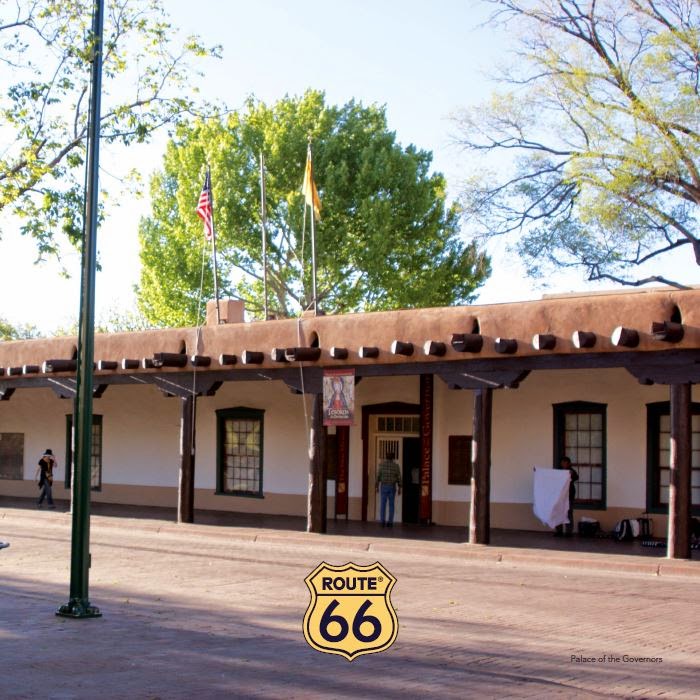Santa Fe was once the capital of Spain’s, and then Mexico’s, territories north of the Rio Grande, but its visible history extends far beyond the arrival of the Spanish; it is thought to have been the site of Puebloan villages that had already been long abandoned by the time the Spanish arrived in 1607. It became the state capital when the territory of New Mexico achieved statehood in 1912. In the early 20th century, the area attracted a number of artists, such as Georgia O’Keeffe and Alfred Stieglitz. The region remains important on America’s art scene. It is the third largest art market in America, behind New York City and Los Angeles, which is pretty impressive considering Santa Fe’s population relative to NYC and LA. The arrival of Igor Stravinsky and the founding of the Santa Fe Opera, one of the world’s leading opera companies, had a similarly invigorating and enduring influence on the musical community. Many people go to Santa Fe for spiritual gatherings and to practice meditative arts at the many spas and resorts that are in and around Santa Fe. Santa Fe is rooted in paradoxes. On the one hand, it is one of the United States’ oldest cities (by some reckonings the oldest), and many residents can trace their roots and property holdings in town back to the 17th century. On the other hand, it has also been the target of a teeming influx of wealthy immigrants in the last 30 years or so that has spurred a great deal of new construction and created inflated prices for real estate -- and drastically elevated taxes on old family properties, many of which are owned by families that can’t afford the taxes. The tension between new and old, rich and poor, etc., is a persistent undercurrent in the community. These and other factors (not the least of which is a well-deserved reputation as a haven for flamboyant characters) contribute to Santa Fe’s uniqueness. Santa Fe has a small but vibrant downtown that is not only walkable, but walked, often, by many people late into the nights, particularly in summertime when the tourists flood in. Parking can be a problem during the summer, but look for parking lots (fee) near St. Francis Cathedral, the new Convention Center, and between Water and San Francisco Streets west of the Plaza. If in town for the Santa Fe Indian Market, plan on parking away from downtown and taking a shuttle, e.g. from De Vargas Mall. Limited, but improving, public transportation is available at other times via Santa Fe Trails, the city’s bus service. The North Central Regional Transit District “Blue Buses” provides free bus service Monday through Friday with routes that connect the counties and communities of Santa Fe, Taos, Los Alamos and Rio Arriba. The main roads through town are St. Francis Drive (US 84/285) from north to south, Cerrillos Road (NM SR 14) from the downtown area southwest to I-25 and beyond, Old Santa Fe Trail and its offshoot Old Pecos Trail from downtown southeast to I-25, and St. Michaels Drive and Rodeo Road and its offshoots, both connecting Old Pecos Trail and Cerrillos east to west. Most outlying attractions are accessible via one of these roads. The downtown area is a remarkable warren of small roads that you really don’t want to drive on; park your car and walk. Streets there tend to wander (Paseo de Peralta, one of the main roads in the downtown area, almost completes a loop) and, even when apparently rectilinear, are not necessarily aligned to true north/south/east/west. Take extra care for pedestrians and cyclists, many streets have sharp turns. If you’re bound for the Santa Fe Opera from Albuquerque or points south, consider taking the Santa Fe Relief Route (NM SR 599), which leaves I-25 south of the Cerrillos Road exit, bypasses most of Santa Fe, and meets US 84/285 just south of the Opera. This can be a good way of getting to lodging and restaurants on the north side of town (e.g. Gabriel’s, cited below) as well; although it’s a few miles out of the way, the much less chaotic driving, particularly around rush hour, provides considerable compensation. Once you get to Santa Fe, consider taking a tour of downtown. Several companies offer open-air tram tours, like The Loretto Line Tours (available in the parking lot of the Loretto Chapel). These tours last about 1.5 hours and give you a sense of the architecture, culture and history of the downtown area.
www.visitsantafe.com





